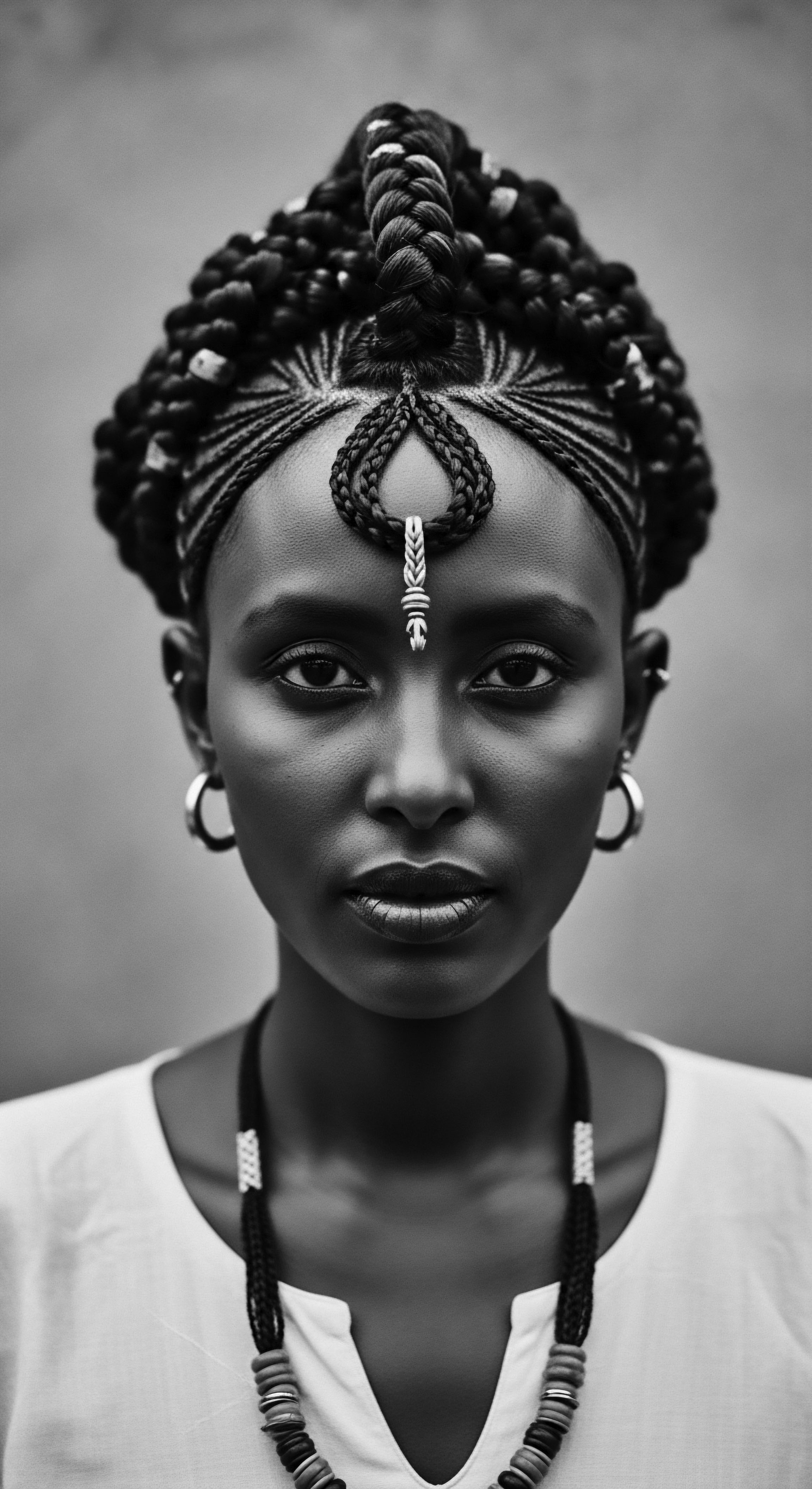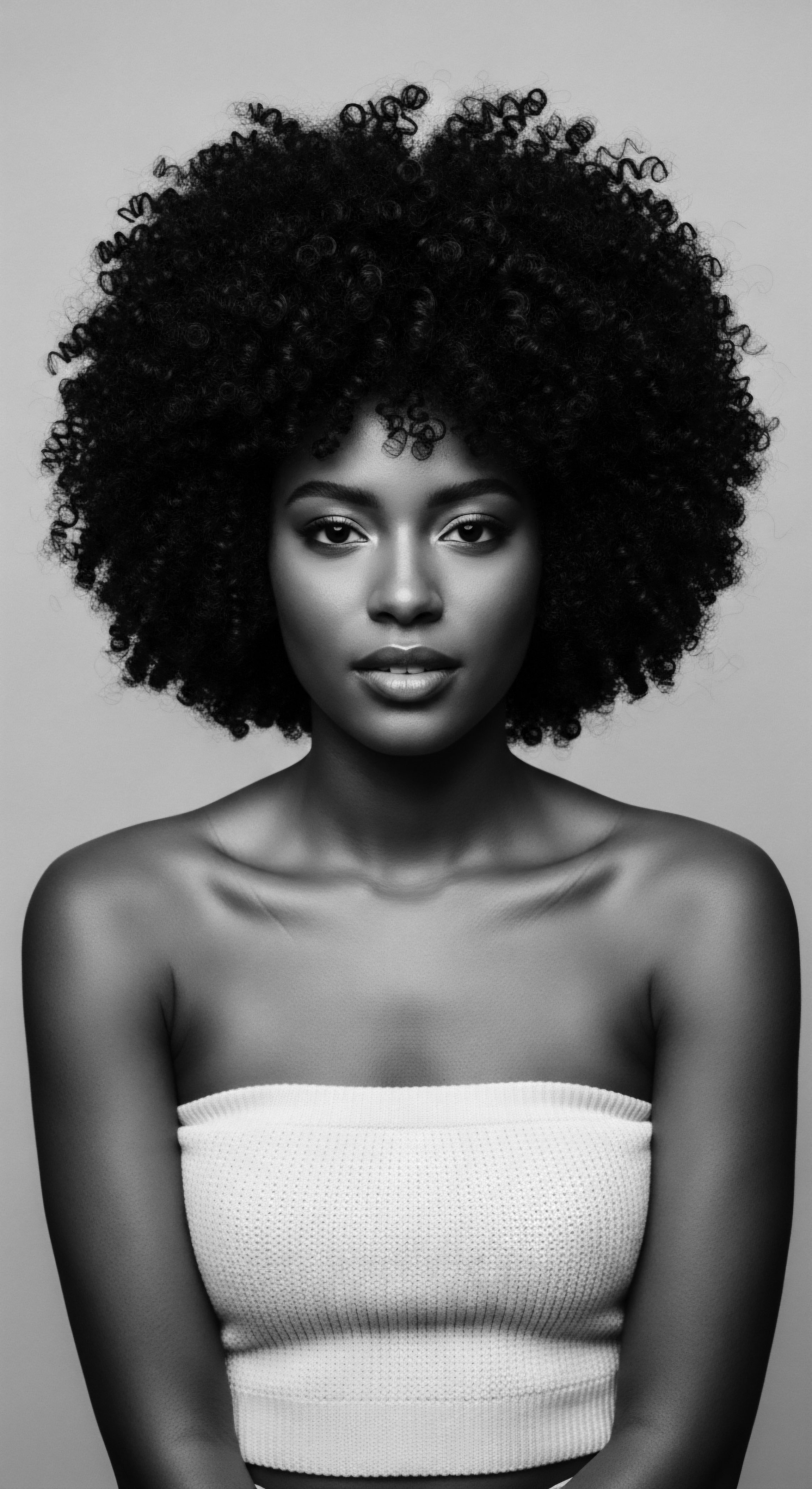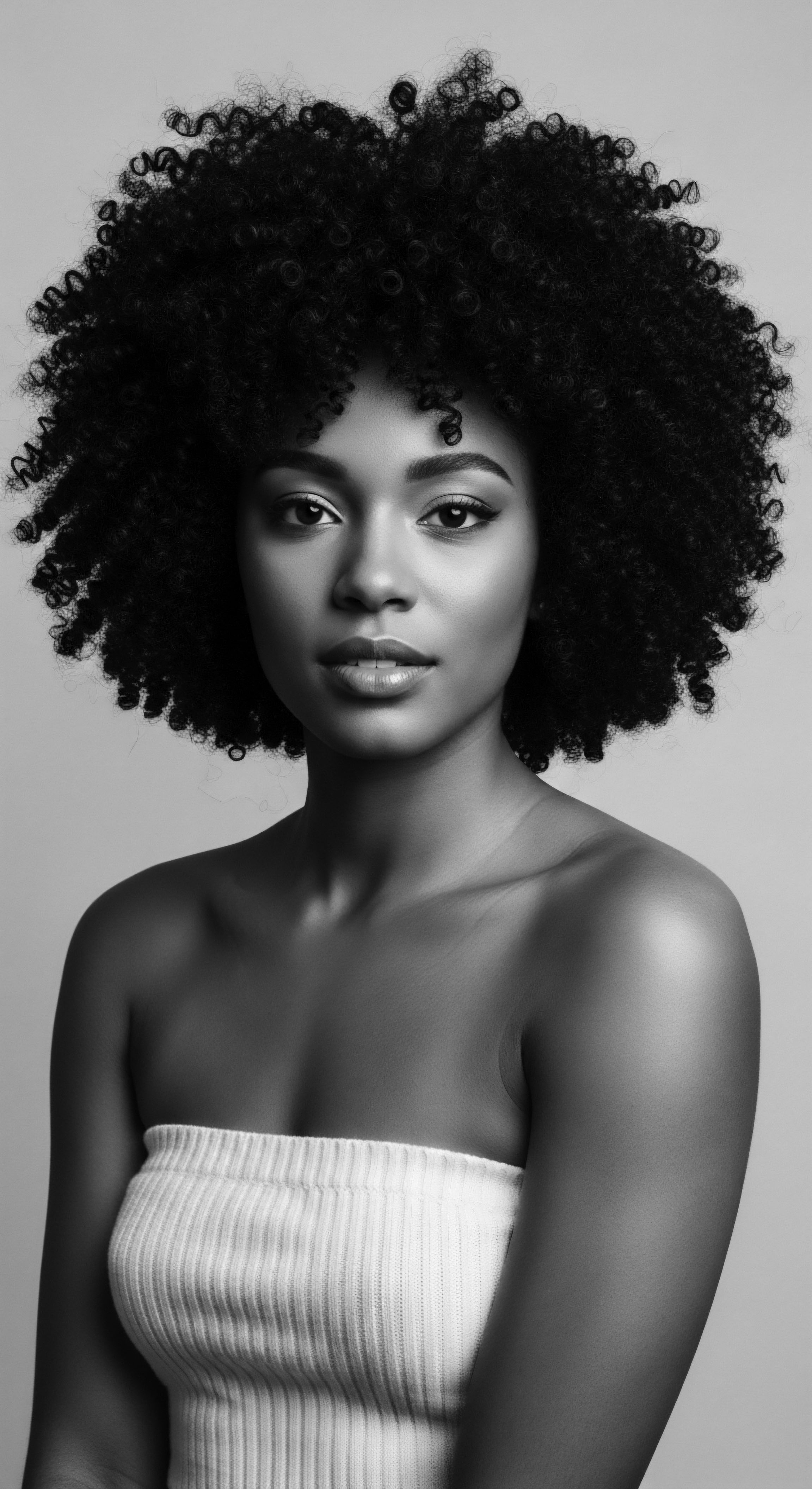
Fundamentals
The sweet, clear liquid known as Glycerin, or glycerol, stands as a fundamental compound in the vast landscape of organic chemistry, recognized for its exceptional capacity to attract and hold moisture. It presents as a transparent, odorless, and viscous fluid, possessing a naturally sweet taste that accounts for its ancient Greek etymology, “glykerós,” meaning sweet. This innate affinity for water sets Glycerin apart, making it a powerful humectant, capable of drawing moisture from the surrounding environment and binding it to surfaces. This singular property renders it indispensable across numerous applications, from food and pharmaceuticals to its profound significance in personal care and cosmetic formulations.
From a foundational perspective, Glycerin represents a simple polyol compound, characterized by three hydroxyl (-OH) groups. These chemical structures are the very heart of its humectant nature, forming hydrogen bonds with water molecules. Such a molecular design allows Glycerin to act as a molecular sponge, pulling hydration into the hair strand or skin layer. Understanding this basic chemical architecture provides clarity on why it has become a staple in countless beauty products, particularly those designed to address dryness and enhance suppleness.
Its simple yet effective mechanism makes Glycerin a widely used ingredient, yet its true significance in hair care, particularly for textured hair, runs far deeper than a mere component on an ingredient list. The story of Glycerin, in many ways, echoes the enduring narratives of human ingenuity and our symbiotic relationship with the natural world, a relationship often overlooked in the swift pace of modern life.
Glycerin, a clear, sweet liquid, acts as a molecular sponge, drawing moisture from the air to hydrate hair and skin.

Glycerin’s Basic Properties
At its most straightforward, Glycerin’s properties are those of a potent moisturizer. Its ability to absorb water from the air and deliver it to the hair shaft prevents dryness, reduces breakage, and helps maintain the integrity of hair strands. This process, termed humectancy, is a cornerstone of effective hair care, particularly for curls, coils, and waves that naturally tend towards dryness due to their structural patterns.
The helical and elliptical shapes of textured hair strands can make it more challenging for natural scalp oils to travel down the entire length, leaving the ends particularly vulnerable to moisture loss. This is where Glycerin offers its quiet support, a silent partner in hair health.
- Hydration Attraction ❉ Glycerin actively pulls water vapor from the atmosphere, delivering it to the hair. This unique attribute ensures that even in arid conditions, hair retains a measure of its vital moisture.
- Suppleness Enhancement ❉ By infusing strands with moisture, Glycerin contributes to improved elasticity. Hair becomes less brittle, more pliable, and less prone to snap or break, which is a common concern for textured hair types.
- Barrier Assistance ❉ It aids in supporting the hair’s outer cuticle, helping to smooth and seal it. A well-sealed cuticle means moisture stays within the hair for longer, lending a healthy appearance and feel.

Common Origins and Historical Echoes
Glycerin today is primarily sourced from vegetable oils, such as palm, coconut, or soy, through a process called saponification or hydrolysis. Saponification, the chemical reaction that produces soap, invariably creates Glycerin as a co-product. This inherent connection between soap-making and Glycerin production holds historical resonance, linking this modern ingredient to ancient practices.
While the direct extraction of Glycerin as a distinct compound is a more contemporary development, the presence of naturally occurring Glycerin in traditional soaps and emollients means its beneficial effects have been experienced for generations. Early civilizations, even without naming the compound, likely benefited from its properties through their natural skin and hair preparations.
The historical journey of Glycerin, therefore, mirrors the evolution of human understanding of natural resources. From the unrefined, intuitive use of plant-derived materials that contained this sweet liquid, to the refined, isolated compound used in modern formulations, a continuous thread of knowledge and innovation emerges. This continuum connects the ancestral hearths, where humble mixtures were crafted, to the sophisticated laboratories of today, all in pursuit of nurturing hair and skin.

Intermediate
Venturing beyond its basic properties, the significance of Glycerin within the discourse of textured hair care takes on a deeper meaning. It acts as a bridge between the atmospheric moisture and the internal structure of the hair, facilitating a delicate exchange that is critical for maintaining hydration and resilience. This interaction is particularly vital for hair types characterized by their unique curl patterns, which often present challenges in uniform moisture distribution.
The very structure of a coil or a kink, while offering stunning visual complexity, can impede the natural flow of sebum down the hair shaft, leaving mid-lengths and ends thirsty for hydration. Glycerin steps in as a silent guardian, mitigating this natural tendency towards dryness.
The term ‘humectant’ only begins to capture the comprehensive role of Glycerin in maintaining hair’s vitality. It functions as a hygroscopic agent, meaning it attracts and retains water molecules. When applied to hair, it draws water from the surrounding humidity into the hair shaft, effectively plumping it with moisture.
This not only softens the hair but also imparts a desirable elasticity, allowing curls to stretch and contract without succumbing to brittleness. Such flexibility is a hallmark of healthy, well-cared-for textured hair, allowing for dynamic styling and enduring environmental shifts.
Glycerin’s humectant nature, a key to textured hair care, allows it to draw vital moisture from the air, enhancing elasticity and softness.

Understanding Humidity’s Influence
The relationship between Glycerin and humidity is a delicate balance, a conversation between hair and its environment. In moderate to high humidity, Glycerin performs optimally, consistently pulling moisture into the hair, contributing to a soft, defined, and frizz-reduced appearance. However, in extremely dry conditions, the dynamic shifts.
Glycerin, still seeking equilibrium, may begin to draw moisture out of the hair strand and release it into the drier atmosphere, potentially leading to a sensation of dryness or stiffness for some. This atmospheric dialogue underscores the importance of mindful application and understanding local climate conditions when incorporating Glycerin into hair care rituals.
This sensitivity to environmental humidity is not a deficiency but a characteristic demanding attuned application. It encourages a deeper connection to one’s surroundings and a more intentional approach to hair care, a practice deeply resonant with ancestral wisdom that always respected the cycles and dictates of nature. Our forebears intuitively adapted their care practices to the seasons and prevailing conditions, a lesson Glycerin subtly reminds us of today.

Glycerin in Traditional Preparations
While the isolated compound ‘Glycerin’ may not have been explicitly named in ancient times, its presence as a natural byproduct in traditional soap-making and the use of certain plant extracts is undeniable. For centuries, communities across Africa utilized methods of saponification to create cleansing agents from local fats and plant ash. These indigenous soaps, steeped in ancestral knowledge, inherently contained glycerin.
For instance, the traditional production of African Black Soap (often known as Alata Samina or Ose Dudu) involves the saponification of plantain peels, cocoa pods, palm kernels, and shea butter, often using lye derived from plantain ash. This process naturally yields a soap rich in glycerin, contributing to its renowned moisturizing and soothing properties for both skin and hair.
The use of these traditional soaps for hair cleansing and care in communities with diverse textured hair types meant that the benefits of glycerin were experienced, albeit without its scientific label. The emollient quality of these soaps, their ability to leave hair feeling soft and manageable rather than stripped, can be partly attributed to the naturally occurring glycerin within them. This inherited wisdom, passed down through generations, effectively harnessed the power of humectancy without needing to categorize it chemically.
- Palm Oil ❉ Widely used in West African societies, its presence in traditional soap formulations contributed to a glycerin-rich product, essential for hydrating hair in varied climates.
- Shea Butter ❉ A cherished ingredient across many African communities, often incorporated into balms and soaps. Its fatty acid composition, when saponified, enhances the glycerin content, providing deep moisture.
- Plantain Peels/Cocoa Pods ❉ The ash from these botanical elements provided the alkali necessary for saponification in many traditional African black soaps. The resulting soaps carried the moisturizing benefits of natural glycerin, promoting scalp health and hair suppleness.
These practices illuminate how ancestral knowledge intuitively selected and processed materials that yielded beneficial compounds like glycerin, long before the advent of modern chemistry. The efficacy of these historical preparations, felt in the softness of hair and the comfort of the scalp, stands as a testament to the deep observational wisdom of past generations.

Academic
The academic understanding of Glycerin, or 1,2,3-propanetriol, transcends its basic chemical structure, offering a window into its profound biochemical and biophysical interactions with biological systems, particularly the hair fiber. Its tri-hydroxyl molecular configuration positions it as a highly effective polyol, capable of forming multiple hydrogen bonds with water molecules and, crucially, with the keratin structure of the hair shaft. This capacity for multi-point binding allows Glycerin to stabilize water within the hair’s cortex, thereby modulating its mechanical properties, thermal stability, and overall appearance. The precise meaning of Glycerin in a scientific context is thus defined by its capacity to serve as a cellular hydrator, a plasticizer for keratin, and a modulator of protein conformation, all of which bear direct relevance to the physiology of textured hair.
From an academic standpoint, Glycerin’s designation as a humectant is a specific classification within the broader category of moisturizing agents, distinguishing it from occlusives and emollients by its primary mechanism of action ❉ attracting water from the external environment. This hygroscopic behavior is governed by principles of osmotic equilibrium and vapor pressure gradients. When Glycerin is present on the hair surface, and the ambient humidity is greater than the moisture content within the hair, it facilitates the movement of water into the hair shaft.
Conversely, in low humidity, the gradient reverses, prompting water efflux from the hair if not adequately sealed by an occlusive layer. This intricate dance of molecular forces underscores the sophisticated environmental interplay that defines Glycerin’s functional profile.

Molecular Interactions with Hair Fiber
The interaction of Glycerin with the hair fiber is a subject of ongoing academic inquiry, revealing its mechanisms of action at a microscopic level. Hair, particularly textured hair, possesses a complex cuticle layer with overlapping scales, beneath which lies the cortex composed of keratin proteins. Glycerin’s small molecular size permits it to penetrate these layers, reaching the cortex where it directly interacts with the keratin.
- Keratin Plasticization ❉ Glycerin acts as a molecular plasticizer for the keratin proteins. By intercalating water molecules between keratin chains, it reduces the rigidity of the protein matrix, enhancing the hair’s flexibility and reducing its propensity for brittle fracture. This is particularly advantageous for highly coiled or kinky hair, which experiences significant mechanical stress during styling and daily manipulation.
- Water Activity Regulation ❉ It modulates the water activity within the hair fiber, effectively lowering it. This helps to reduce the rate of microbial growth on the scalp and hair, contributing to a healthier microbiome, a facet often overlooked in discussions of hair health.
- Enhanced Hydration Dynamics ❉ Glycerin’s presence creates a more hydrophilic environment within the hair, promoting better water absorption and retention from subsequent moisturizing treatments or even ambient humidity. This enduring hydration helps maintain the hair’s natural curl pattern and reduces frizz by providing a stable moisture content that prevents excessive swelling and shrinkage.
The implication of these molecular interactions extends to the structural integrity and aesthetic characteristics of textured hair. The maintenance of internal moisture levels is paramount for preventing the common challenges associated with dryness, such as breakage, dullness, and a lack of definition. Glycerin, by facilitating this internal hydration, therefore plays a significant role in preserving the structural resilience and visual vibrancy inherent to diverse hair textures.

Historical Context and Ancestral Application
The historical trajectory of Glycerin, from an unarticulated component to a scientifically elucidated compound, offers a profound narrative of human observation and intuitive wisdom. While the chemical isolation of Glycerin is a relatively modern phenomenon, dating back to the 18th century discovery by Carl Wilhelm Scheele, its beneficial presence in ancestral practices is well-documented, albeit under different guises. The meaning of Glycerin in ancient contexts is not found in explicit scientific terms but in the efficacy of the rituals and materials that implicitly contained it.
One compelling illustration of this inherited knowledge comes from the enduring tradition of soap making across African communities. Prior to industrialization, communities would craft cleansing agents using readily available natural resources ❉ plant ashes providing the alkaline lye, and various indigenous oils and fats serving as the lipid source. The process of saponification, the chemical reaction of fat with an alkali, inherently produces soap and Glycerin as a co-product. This meant that the soaps created through ancestral methods, often incorporating ingredients like Palm Oil, Shea Butter, and the ashes of Cocoa Pods or Plantain Peels, were naturally rich in Glycerin.
| Traditional Ingredient/Process Plant Ash (e.g. Plantain Peel Ash) |
| Role in Soap Making Provides the alkali (potash) necessary for saponification. |
| Glycerin's Implicit Contribution to Hair Care Facilitated the creation of cleansing agents that, through saponification, naturally yielded Glycerin, promoting gentle cleansing. |
| Traditional Ingredient/Process Palm Oil |
| Role in Soap Making A primary lipid source for soap production, abundant in fatty acids. |
| Glycerin's Implicit Contribution to Hair Care Contributed significantly to the fatty acid profile, ensuring a higher yield of Glycerin during the saponification process, leading to more moisturizing soaps. |
| Traditional Ingredient/Process Shea Butter |
| Role in Soap Making A rich fat source, also used directly as an emollient. |
| Glycerin's Implicit Contribution to Hair Care When incorporated into soap, its high unsaponifiables and fatty acids resulted in a soap with a substantial natural Glycerin content, aiding in post-wash softness and scalp nourishment. |
| Traditional Ingredient/Process These ancestral preparations, while not explicitly naming Glycerin, leveraged its intrinsic properties for hair and scalp health through generations of practiced wisdom. |
Dr. M. O. Akolade and co-authors, in their 2012 study, “Preparation and Characterization of Black Soap from Palm Kernel Oil and Cocoa Pod Ash,” meticulously examined traditional black soap formulations.
Their findings revealed that the high Glycerin content, a direct outcome of the saponification process utilizing plant-derived potash, was instrumental in delivering the product’s notable emollient qualities. This academic validation of an ancient craft demonstrates that even without the tools of modern chemistry, ancestral communities possessed a deep, intuitive grasp of how to manipulate natural materials to achieve desired effects—effects directly attributable to compounds like Glycerin. This historical example powerfully illuminates Glycerin’s enduring connection to textured hair heritage and ancestral practices. The consistent use of these traditional soaps for both skin and hair meant that the benefits of Glycerin—reduced dryness, improved elasticity, and a softer texture—were woven into the very fabric of daily care routines. This ancestral knowledge provided a foundation for contemporary understandings of hair hydration.
This is a remarkable instance where scientific rigor retroactively illuminates the efficacy of age-old practices, offering a tangible link between inherited wisdom and modern cosmetic science. The ancestral application of ingredients that inherently contained Glycerin underscores a sophisticated, experiential understanding of emollients and humectants long before their chemical classification. It speaks to a heritage of care that was responsive, resourceful, and deeply connected to the earth’s offerings.

Glycerin’s Role in Scalp Health and Microbial Balance
Beyond its direct interaction with the hair fiber, Glycerin’s academic meaning extends to its influence on scalp physiology and the scalp’s microbiome. The skin on the scalp, like the rest of the body, maintains a delicate ecosystem of microorganisms. Disruption of this balance can lead to common scalp conditions such as dryness, flaking, or irritation.
Glycerin, by promoting adequate hydration of the stratum corneum on the scalp, supports its barrier function. A healthy skin barrier is crucial for defending against external irritants and preventing excessive trans-epidermal water loss.
Recent research, while not always directly focusing on Glycerin, emphasizes the importance of a balanced scalp microbiome for optimal hair growth and health. Glycerin, by maintaining a hydrated and stable environment, can indirectly contribute to this balance. Its non-irritating nature and physiological compatibility make it a preferred humectant in formulations designed for sensitive scalps, often found among individuals with textured hair who may experience heightened sensitivity due to styling practices or environmental factors.
The strategic incorporation of Glycerin in hair products, therefore, reflects a sophisticated understanding not only of hair shaft properties but also of the complex biology of the scalp. This comprehensive approach to hair and scalp health is a contemporary echo of ancestral holistic practices, which often considered the body as an interconnected system.

Future Perspectives and Ethical Sourcing
The academic delineation of Glycerin also encompasses its future trajectory, particularly concerning sustainable and ethical sourcing, a consideration increasingly aligned with ancestral values of environmental stewardship. As global demand for cosmetic ingredients rises, the origin and production methods of Glycerin become critically important. The shift from animal-derived or fossil-origin Glycerin to 100% vegetable-based Glycerin, sourced from rapeseed, sunflower, or palm oil, represents a step towards more sustainable practices.
However, the sourcing of vegetable oils, notably palm oil, presents its own set of environmental and social considerations, including deforestation and land rights issues. The academic community, alongside industry, is engaged in ongoing discourse to ensure that the benefits of Glycerin in hair care do not come at an undue cost to the planet or its communities. This pursuit of ethical production mirrors the reverence for nature and community well-being that characterized many ancestral societies. The elucidation of Glycerin’s full meaning thus encompasses not only its chemical and biological functions but also its intricate ties to global supply chains, ethical consumption, and the enduring principles of responsible resource management.
- Sustainable Production ❉ Advances in biotechnology are exploring microbial fermentation as a novel pathway for Glycerin production, potentially offering a more environmentally conscious alternative to traditional saponification of plant oils.
- Customized Formulations ❉ Further research into how varying Glycerin concentrations and combinations with other humectants and emollients impact different textured hair types across diverse climates promises to lead to more personalized and effective hair care solutions.
- Bio-Mimicry in Hair Science ❉ Academic efforts aim to replicate the intricate hydration mechanisms found in natural biological systems, leveraging Glycerin’s properties to engineer products that more closely mimic the hair’s inherent self-moisturizing capabilities.
The rigorous academic exploration of Glycerin continues to deepen our understanding of this humble yet powerful compound, affirming its indispensable place in modern hair science while inviting us to look back at the intuitive wisdom that recognized its benefits millennia ago.

Reflection on the Heritage of Glycerin
The journey through Glycerin’s definition, from its elemental biology to its intricate molecular dance with textured hair, ultimately brings us back to a profound reflection on heritage. It underscores the enduring connection between ancestral wisdom and contemporary scientific understanding, revealing a continuous loop of discovery and appreciation. The meaning of Glycerin, when viewed through the lens of Black and mixed-race hair traditions, deepens immeasurably. It becomes more than a mere chemical; it stands as a quiet symbol of resilience, adaptation, and the timeless pursuit of wellness rooted in communal knowledge.
Ancestral practices, often guided by keen observation of natural phenomena and a profound respect for the earth’s bounty, intuitively harnessed the benefits of compounds like Glycerin without the need for laboratory isolation or complex nomenclature. The soft, supple feel of hair nurtured with traditional black soaps, the vibrancy of coils sustained by carefully crafted plant-based balms, all carried the silent signature of Glycerin’s humectant powers. This legacy of care is not a forgotten chapter; it is a living, breathing archive, carried forward in the very strands of our hair and the inherited practices we continue to honor.
The dialogue between modern science and ancestral hair care is not a conflict, but a harmonious validation. Our scientific tools now provide explanations for the efficacy of rituals passed down through generations, affirming the genius inherent in traditional approaches. The clarity offered by chemical analysis simply amplifies the reverence for the intuitive wisdom that already knew what hair truly needed to thrive. Glycerin, in this context, serves as a beautiful reminder that the most profound insights often lie at the intersection of ancient knowledge and contemporary inquiry.
Glycerin’s enduring presence in hair care speaks to a timeless wisdom, connecting ancestral practices with modern scientific understanding.
This reflection on Glycerin’s heritage invites us to consider hair not merely as a biological structure but as a potent carrier of cultural memory, identity, and narrative. Each curl, every wave, and each tightly coiled strand holds whispers of journeys, resilience, and the creative spirit of those who came before us. Understanding how a compound like Glycerin has played a role, both implicitly and explicitly, in these stories adds another layer to our appreciation of this rich tapestry.
It encourages a soulful engagement with our hair, viewing each care routine not just as a task, but as a continuation of a tender thread woven through generations. In tending to our hair with ingredients like Glycerin, we are not just hydrating strands; we are honoring a lineage, nurturing a heritage that continues to flourish.

References
- Akolade, M.O. Adebayo, L.B. & Olufemi, P.A. (2012). Preparation and Characterization of Black Soap from Palm Kernel Oil and Cocoa Pod Ash. American Journal of Scientific and Industrial Research, 3(3), 165-170.
- NIIR Board of Consultants & Engineers. (2016). The Complete Technology Book on Soaps (2nd ed.). NIIR Project Consultancy Services.
- Warra, A.A. (2013). A Report on Soap in Nigeria Using Indigenous Technology and Raw Materials. African Journal of Pure and Applied Chemistry, 7(7), 139-145.
- Zahran, H.A. (2023). From Fat to Foam ❉ The Fascinating World of Soap Chemistry and Technology. Egyptian Journal of Chemistry.
